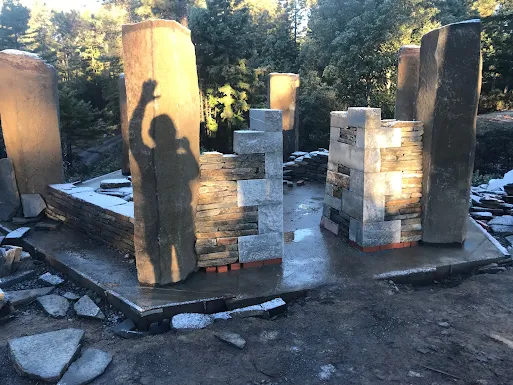Before we go into all the details of the temple's arch dimensions, the exterior batter and vertical elliptical interior walls, and all the niche arrangements, the types of stones we used and how they were measured and shaped, I think we should pause and just look at how wet dry stone walling can be. This was the rain of the not so rainy season that California sorely needed, but we didn’t. It’s always a trade off.

Walling is fun in the rain, sometimes. But when it involves really precision work and electric grinders and gas powered cut off saws , it can loose its appeal. The carefully drawn lines chalk lines and scribed coloured pencil marks on the stones all disappear in a dusty soupy mix. The grinder extension wires short out in the puddles. You are always losing your chisel in the mud. Your soggy tape measure jams up. The hand carts loaded with heavy cornerstones sink up to the axles. And of course everything is super slippery.
But we poured on , I mean powered on, hoping to see a rainbow.
And Lo... On the third day we saw the light of the sun.



